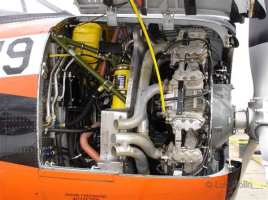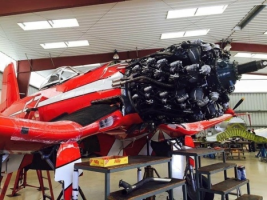michaelvader
Members +
Hallo friends,
while working on the Sikorsky S-58 series to convert to piston engine I found some mysterious things about the engine.
A lot of aircraft used this engine from DC-3, B-17 and the Sikorsky H-34.
In a lot of cases (also the original Microsoft Douglas DC-3) the engine data said it was 14 cylinder two row radial engine with a
cylinder deplacement of 130 71 cu inch per cylinder.
When I look into my reference book "Major Piston Aeroengines of World War II by Victor Bingham", the engine is discribed as a
single row 9 cylinder radial engine. With 1823 cu inch and a cylinder displacement of 202,47 cu inch per cylinder.
of course the differencies in HP are understandable as there have been different series, also with single stage or two stage supercharger or as in the B-17 with turbo chargers.
Can some one explain me the differencies of the generarl engine conception. in which way the wrong (I presume 14 cylinder with 130,71 per cylinder displacement is the wrong one) has influence of the aircraft in our flightsim 2004?
Best regards
Michael
while working on the Sikorsky S-58 series to convert to piston engine I found some mysterious things about the engine.
A lot of aircraft used this engine from DC-3, B-17 and the Sikorsky H-34.
In a lot of cases (also the original Microsoft Douglas DC-3) the engine data said it was 14 cylinder two row radial engine with a
cylinder deplacement of 130 71 cu inch per cylinder.
When I look into my reference book "Major Piston Aeroengines of World War II by Victor Bingham", the engine is discribed as a
single row 9 cylinder radial engine. With 1823 cu inch and a cylinder displacement of 202,47 cu inch per cylinder.
of course the differencies in HP are understandable as there have been different series, also with single stage or two stage supercharger or as in the B-17 with turbo chargers.
Can some one explain me the differencies of the generarl engine conception. in which way the wrong (I presume 14 cylinder with 130,71 per cylinder displacement is the wrong one) has influence of the aircraft in our flightsim 2004?
Best regards
Michael


